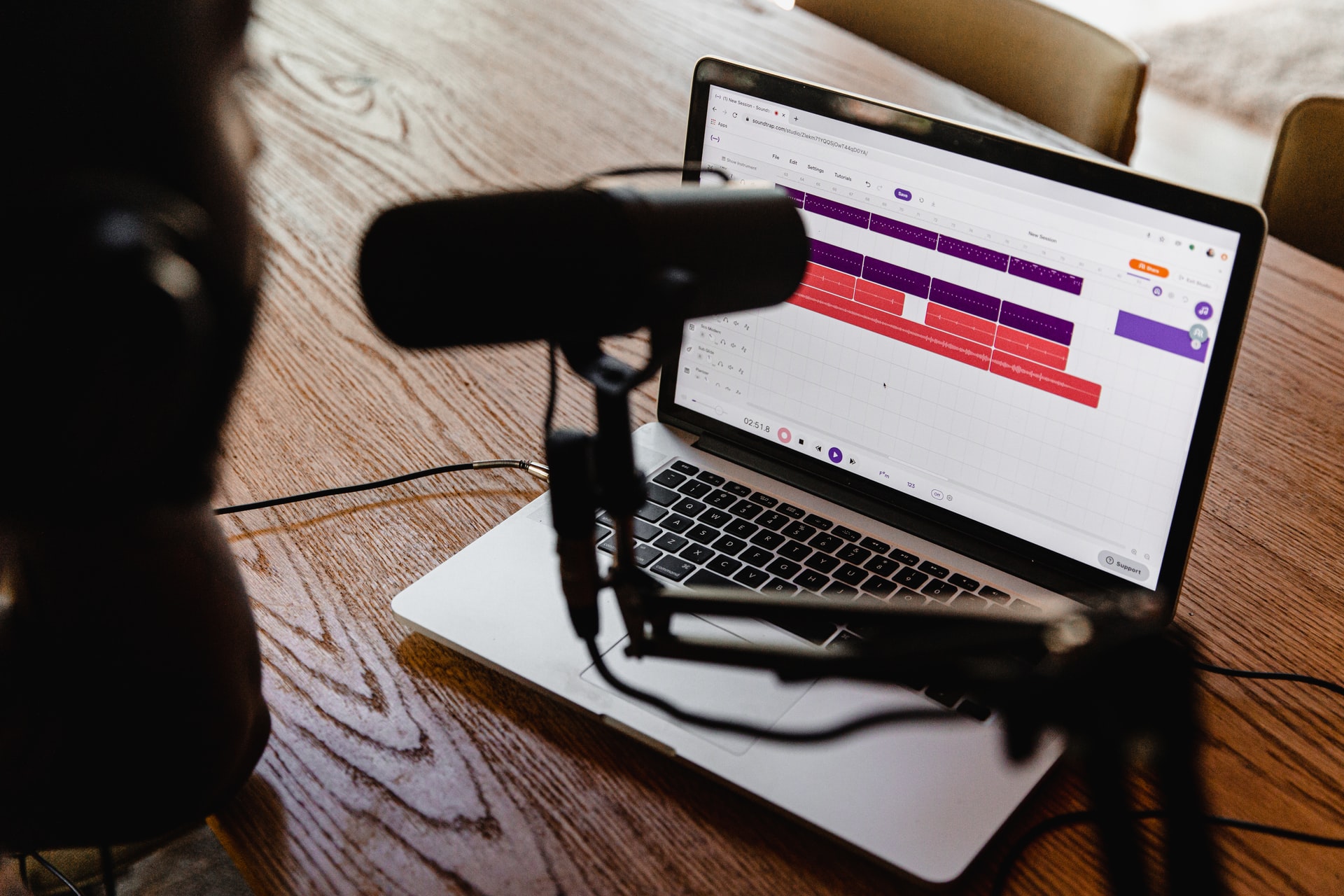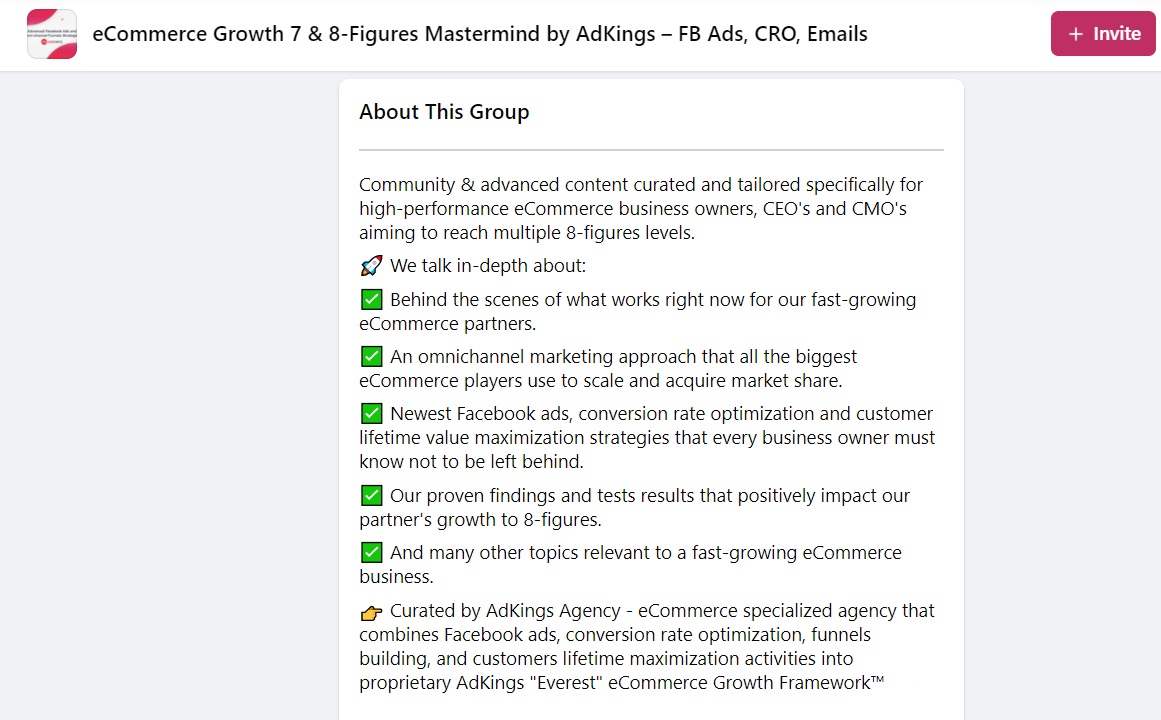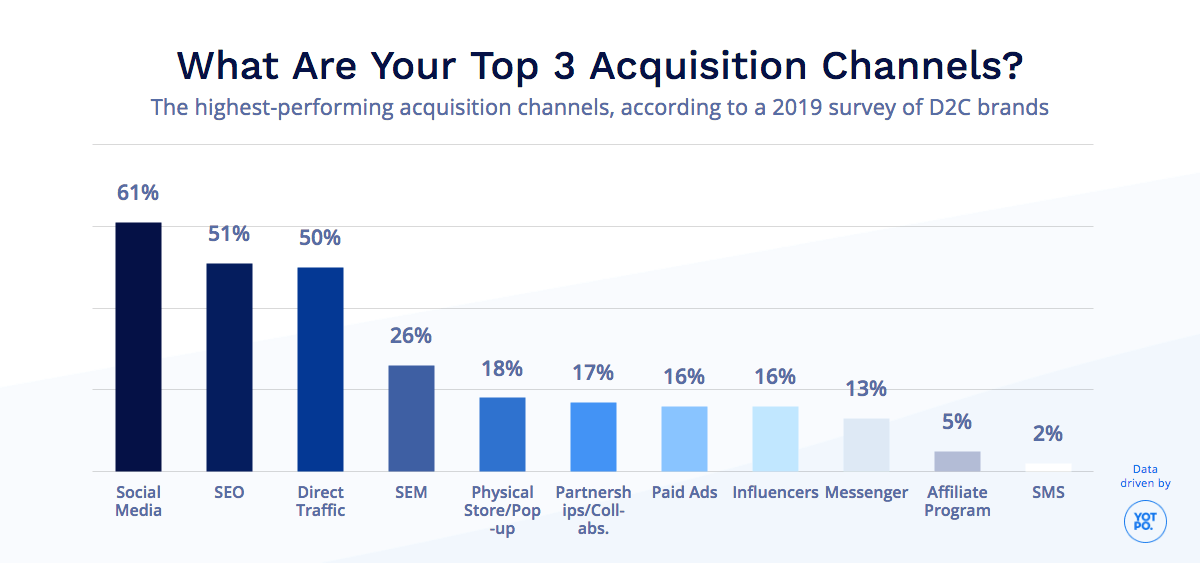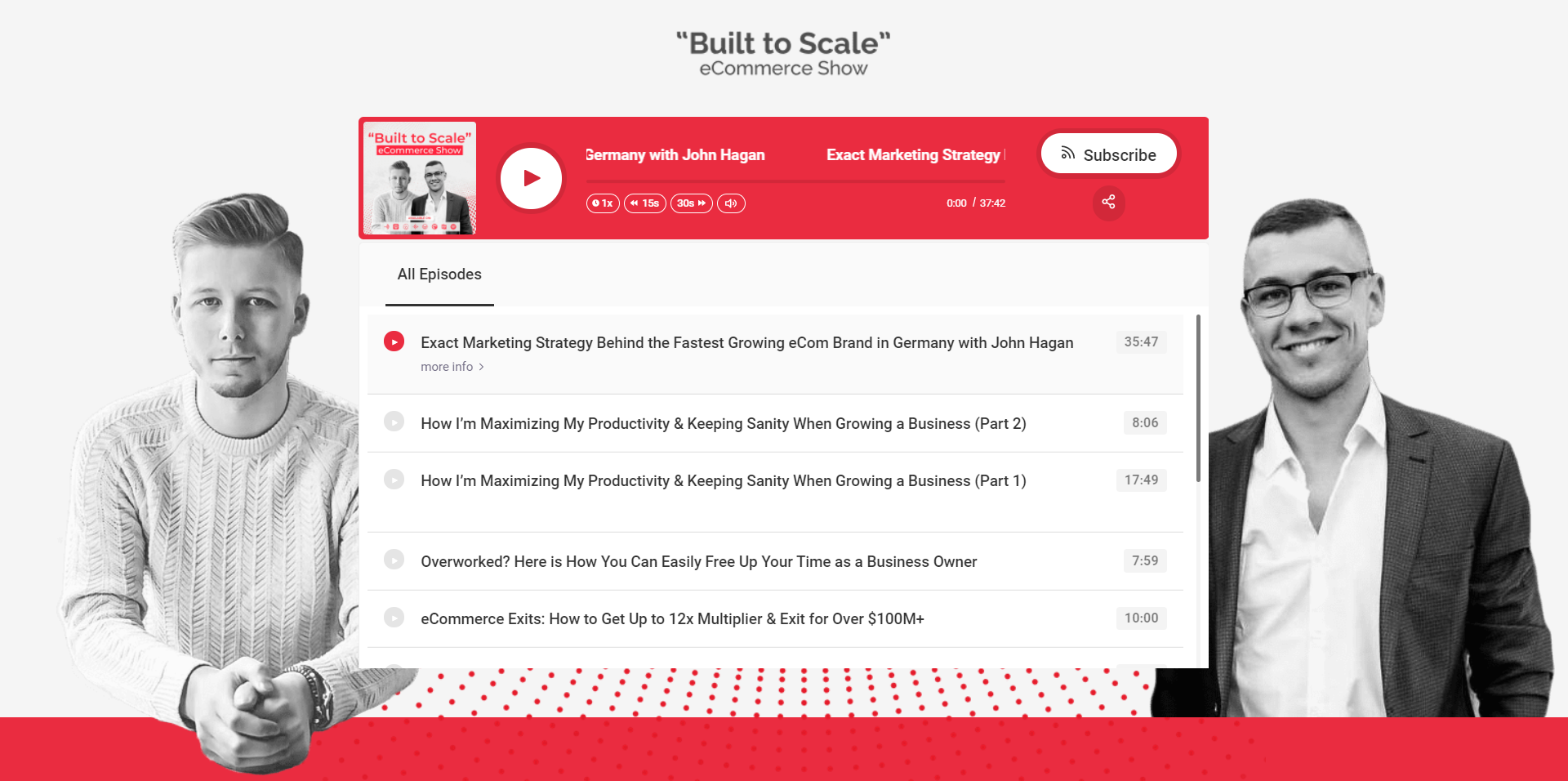
Darius Kunca is the co-founder of AdKings and host of the “Built to Scale” (BTS) eCommerce podcast, which relaunched this year on January 25. AdKings is a Facebook ads growth agency specializing in eCommerce. They coordinate more than $18M of ads for just nine members of their exclusive client list. Their combination of Facebook ads, conversion rate optimization, building funnels, and maximizing customer lifetime value has produced a proprietary AdKings “Everest” eCommerce Growth Framework™.
The “Built to Scale” podcast teaches eCommerce experts how to grow to eight and nine figures. It also reveals how AdKings spends up to $100,000 per day on Facebook ads for a single store, how they scaled one of the fastest-growing eCommerce brands in the US from $0.5M to $26M in a single year, and other vital lessons learned from transforming over a dozen DTC brands into market leaders.
Read on to learn how to diversify your acquisition channels, discover what makes you different, and understand why Darius decided to relaunch the AdKings podcast.
Testing different channels
When AdKings started out, they tested different acquisition channels, including their podcast, webinars, newsletters, a Facebook group, and LinkedIn outreach. 2020 was their year of experiments, and they tested multiple acquisition channels.
Cater to your audience
One of Darius’ early missions was to learn which channels worked for their audience. For example, webinars were not an effective lead generation channel for them because of their target audience. AdKings works with eCommerce clients who are ready to invest at least $200-300k in advertising and utilize more sophisticated business models.
“Usually, these business owners just do not have time to go into a webinar or consume an hour of content from somebody they do not know.” – Darius Kunca
Knowing the time constraints, preferred channels, and content consumption habits of his audience helped Darius quickly rule out channels that wouldn’t move the needle.
Creating a community on Facebook
In 2018, before AdKings was an official agency and they were still freelancing, Darius and his co-founder created a Facebook community focused on eCommerce lessons and growth strategies. You can see how well they understand their audience from the group description, which matches their ideal customer profile (ICP) exactly.

Today, the highly curated, private Facebook group of just a few thousand members generates half of AdKings’ leads by word-of-mouth and referrals.
“About half of the leads we get right now come from our Facebook group one way or another.” – Darius Kunca
The group is different from AdKings’ other marketing channels, because they’re able to establish one-on-one connections with individuals. It allows them to be seen as people rather than an agency.
Finding differentiators
Creating a Facebook group was a prime opportunity for them a few years ago, and it’s still relevant today, but now everyone is doing the same thing.
“Everyone else jumped in the game, and when everybody else is in the game, especially if you’re doing things organically, it’s very hard to differentiate.” – Darius Kunca
Now that there are thousands of groups with a similar purpose, Darius finds that results are decreasing, and it’s harder to differentiate on this channel. Since they started early, they were able to build relationships within their community, so it’s worth keeping, but dangerous to rely on completely.
“We’ve basically built up these relationships, so that’s why we’re keeping [the Facebook group]. But at the same time, we’re looking to expand our channels.” – Darius Kunca
Diversify your acquisition channels

Darius recommends having two or three main customer acquisition channels, which could be referrals, partnerships, a newsletter, or other inbound or outbound channels. You need to have multiple lead sources to ensure stability when, inevitably, the market shifts.
“Find what you like the most, because, honestly, podcasts can be successful, YouTube channels can be successful, blogs can be successful, groups and communities can be successful, newsletters can be successful.” – Darius Kunca
The key to diversifying your acquisition channels is to hone in on what works for you. Because there are so many options, you can lose focus and end up splintering your efforts. Especially in B2B, it’s important to give a channel time to work.
For example, if you want to start a YouTube channel, you can’t just drop videos; you need to plan an in-depth strategy. You need to advertise and distribute your content effectively.
“It’s not about the things you do, it’s about how you do things.” – Darius Kunca
At the end of the day, you can’t be generic when running a podcast, webinar, newsletter, etc. because the market is flooded with them. It’s all about choosing one or two things that are the most likely to work for you, and then pursuing them the best you can.
https://rachelandreago.com/startup-content-marketing-strategy-management/
Why AdKings decided to invest in a podcast relaunch
In January 2021, Darius decided to relaunch the AdKings podcast, “Built to Scale.” The reasons behind this decision included the time investment required to generate a return, audience insights, and the future stability of the channel.

1) The podcast was generating returns with minimal time investment
“The podcast was something like 12th on my priority list, but was still doing somewhat well.” – Darius Kunca
When Darius looked at their podcast’s performance, he noticed they were receiving a regular volume of downloads despite not investing much time in it. It wasn’t a huge number, but when he compared it to the exposure they earned from their Facebook community, he discovered the podcast garnered almost half of their leads with less effort and focus.
“It’s very easy to create content here. I can hop in a call once every two weeks and have content for those two weeks. It takes like two hours on my end and then it’s optimized.” – Darius Kunca
2) Their audience enjoys podcasts
“It’s very important to identify your key target audience and have one-on-one calls with them. Ask their opinion, how they’re consuming content, what they’re enjoying lately, and basically dig deeper.” – Daris Kunca
Once a month, Darius calls clients and key people they work with to learn more about them. Through these calls, he discovered a common theme in podcasts.
“We’re getting a lot of quality time spent with us, which is an important metric to look at in inbound marketing: How much time do people spend consuming your content, because each extra minute is building a relationship.” – Darius Kunca
Building relationships and trust are how Darius landed some of his larger clients, so he knows it’s wise to invest in channels that familiarize your clients with your brand.
3) They could make the podcast unique
“We were able to provide very unique content. When I talked with people, I got feedback that what makes us unique is us; we have stories behind how we’re growing clients, we have real behind-the-scenes info.” – Darius Kunca
Darius found people were interested in AdKings’ stories about client growth, which sparked the idea that their podcast could be more than just interviews. They would share real client stories, actual case studies, and lessons from working in the weeds. This key aspect of their podcast came from their clients, members of their Facebook community, and their network. So, they were able to create connections with their community through the podcast and what interested them.
How to relaunch a podcast
For AdKings, the benefits of their podcast were:
- Their audience liked it.
- They could make it unique and build connections.
- It didn’t take much time.
The podcast was already bringing in results with minimal time investment. It introduced AdKings to their target audience on their preferred channel, and they had unique stories to differentiate themselves. These three things were the deciding factors in relaunching the podcast.
Invest in initial traction
“If you will not commit to it, it will not work out.” – Darius Kunca
AdKings was getting 3x results from the podcast, even before it officially relaunched in January. So, why did they invest in a proper relaunch in the first place?
“Any big marketing activities that involve third-party platforms especially usually need initial traction to be successful. Good initial traction — for example, us getting a high number of views, subscribers, and reviews — can push us to rank.” – Darius Kunca
Significant investment in your initial traction can produce a flywheel effect. The more traction you get, the higher you rank. The higher you rank, the more traction you can gain organically.
The question then becomes, how do you align all your initiatives, find the right timing, and leverage that initial momentum to get going?
“If you get higher traction first, this will make the next six months to a year way quicker.” – Darius Kunca
This principle applies to more than just podcasts; it could be a newsletter, book launch, or webinar series. If you incentivize people to download and share early, you can build that first critical push that enables viral growth.
Focus on what will work tomorrow
As Darius did more research, he noticed podcasts were a growing trend.
“[Podcasts] are something that I guess will be foolproof for at least three, maybe five years. In B2B, I don’t want to invest in things that are working today, but you’re not sure if it will work in six months, because with things like a podcast, it could take six months to a year to get traction.” – Darius Kunca
Results can take a while, so you should invest in initiatives that will stand the test of time. What works now won’t necessarily work tomorrow. Darius learned this from some of his mentors, who have watched popular tactics go out of style as the market evolves. What worked just three years ago, even in the same groups, industries, or audiences, might not work today.
“The trick here was for us to find our own path. We tried a lot of experiments – some of them incentivized by our mentors, some of them we just wanted to try for ourselves.” – Darius Kunca
Results from the podcast relaunch
“Our numbers are within 10% of my expectations and goals for the podcast, so it’s going really well.” – Darius Kunca
Darius had a good idea of what to expect with the podcast. He was able to look at data from existing episodes and seek advice from other people in his network who ran successful podcasts. Darius spent three weeks collecting information, setting expectations, and establishing goals before setting the plan into action.
“I committed myself and the agency to six months, basically two quarters of working on the podcast and seeing what happens. This is where 70% to 80% of our time will go.” – Darius Kunca
Six-month testing timeline
Now that the podcast has launched and AdKings` made their initial investment in ads and partnerships, it’s easier to run on autopilot. Darius plans to run a six-month test with the podcast, then validate and review the results.
He’ll look at:
- Reach
- Number of leads
- Quality of leads
Then, he’ll decide if he wants to continue running the podcast, double down, stop, or do something else.
Darius Kunca’s advice for running podcasts
1) Understand what makes you different
There are so many podcasts that do interviews, and some of them are amazing. However, the BTS podcast is unique because of AdKings’ knowledge and experience. Their stories come from real clients and show what worked, what failed, all the challenges they faced, and how they overcame them.
“People are interested in this because it’s real and we can connect with them.” – Darius Kunca
2) Provide value quickly
Podcasts are great because they provide condensed value in a short timeframe. The goal is to give your audience so much value in just 10 minutes that they join another podcast. Then, they find so much value in that, they join the next one, and the next.
“We figured out business owners don’t want to spend 30, 40 minutes or an hour just to get free golden nuggets of wisdom that you could have given in 7 or 10 minutes.” – Darius Kunca
3) Give it time
Podcasts are booming right now, with more competitors jumping onboard every day. They don’t start when you begin recording, or end when you stop. Podcasts provide value beyond each episode’s runtime.
“You will need time. It’s not easy. It’s not something you can just do and expect to win.” – Darius Kunca
You need to figure out things like:
- What to talk about
- Who you’re talking to
- What questions to ask
- Your intro and outro
- What calls to action to use
- Whether or not you need a website
- What hosting provider to use
- What features you need on your website
- How to edit your recording and do sound tests
- How to get your audience to tune in
- Whether you’ll advertise the podcast or leverage your existing network
4) Create frequent touchpoints
Remember, you’re competing for people’s time, and people are easily distracted. That means you need to provide value consistently to stay on their radar. Darius says publishing twice a week should be the bare minimum to create connections with your listeners.
“It’s very hard to get on a person’s list of podcasts to listen to, and it’s very important to stay on that list. The number one reason we might drop out of that list is by not publishing, so you need to be very consistent.” – Darius Kunca
AdKings publishes their podcast three times a week, but Darius says five times a week would be ideal if they had the time.
5) Learn what works for you
Podcasts aren’t the right channel for everyone, and it’s important to understand that. Even Darius says podcasts wouldn’t be a good fit for corporations, because you need authenticity and a person-to-person connection.
“I wouldn’t say podcasting is the most amazing channel, but it’s good – if you make it work.” – Darius
Follow the 80/20 principle. Understand what works for you now, how you can double down on it, and what you want to do in the future. If 80 percent of your leads are coming from a channel that only takes 20 percent of your effort, take a closer look at how you can extend that channel further.
What’s next?
If everything goes as planned, for the next two years, AdKings will focus on:
- Publishing a book
- Running the “Built to Scale” podcast
- Publishing their newsletter
For the past eight months, Darius has been writing a book on eCommerce growth. The initial manuscript is finished, and AdKings will publish it sometime this year.
They’ve noticed some common trends while building client businesses, which have given them exclusive insights into how businesses grow. The book will contain all of their client experiences and highlight the changes merchants need to make to grow business from one level to the next.
What brought a business to $50,000 monthly revenue won’t take it to $150,000. The same principle applies when growing from $150,000 to half a million, or half a million to $20M/year. AdKings was able to watch each of these stages unfold from behind the scenes, lending a unique perspective to their observations.
AdKings also plans to combine the book with their podcast so they’ll feed into each other; They’ll attract podcast listeners from their book audience, and more readers from their podcast.
Read more insights from other marketers
How superstar marketers use data to drive decisions (and the results)